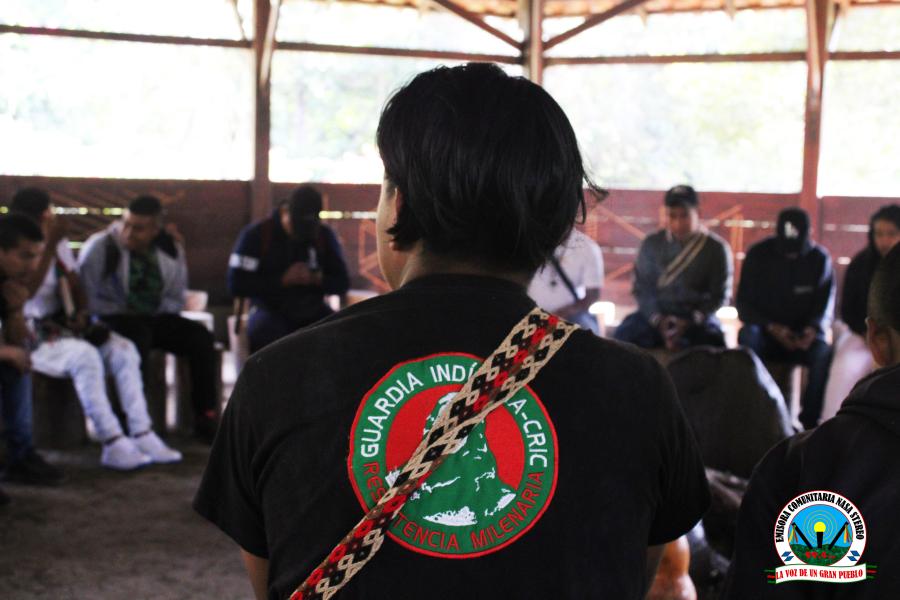Indigenous peoples don’t only suffer from the effects of climate change; in some cases they suffer from the solutions to climate change.
 The fruits of the oil palm. Photo by Eric WakkerT
The fruits of the oil palm. Photo by Eric WakkerT
he most logical approach to stopping carbon dioxide emissions is for countries, especially industrialized countries, to reduce their fossil fuel consumption and cut back on emissions drastically. But the UN Framework Convention on Climate Change (the 1994 parent treaty of the Kyoto Protocol) took a more market-based approach, as seen in the proposals of the Kyoto Protocol. Annex 1 countries (38 industrialized countries) pledged that by 2012 they will reduce their emissions by an average of 5.2 percent below the l990 levels. They will achieve this by buying “carbon credits” from countries or corporations that are below their permitted levels of emissions and by investing in projects that store carbon. None of the three market-based “flexible mechanisms” tackle directly the physical root causes of global warming: the transfer of fossil fuels from underground, where they are effectively isolated, to the atmosphere.
One of the most prevalent of these market-based schemes is the use of biofuels as an alternative to petroleum. The European Union’s Biofuels Directive targets having 5.75 percent of transport fuel in Europe come from biofuels by 2010 and 20 percent by 2020. President Bush said in his 2006 State of the Union speech that by 2020, 30 percent of America’s cars will run on bioethanol.
While US and EU farms are now extensively used to raise crops for biofuels, a huge supply gap remains. To address the demand for biofuels, Malaysia, Indonesia, Colombia, Ecuador, Nigeria, Côte d’Ivoire, and Papua New Guinea, among others, are rapidly expanding plantations of oil-palm. Malaysia and Indonesia are gearing up to supply 20 percent of the market in Europe and have just announced that they will set aside 40 percent of their palm oil output for biodiesel.
Oil palm (Elaeis guineensis) is a native plant of West Africa that has been traditionally used as food, medicine, woven material, and wine. Oil palm can be grown and harvested in an environmentally friendly way, as it has been in Western Africa by small-scale planters who undertake diversified agroforestry. But countries, multilateral funding institutions, the UN, and the private sector—including private banks and bilateral donors—support a large-scale agroindustrial model. Oil palm plantations have become one of the fastest-growing agricultural projects in the tropics, not only in Africa, but also in the Asia-Pacific region, Latin America, and the Caribbean.
The main product of these plantations is palm oil (stearin and olein) from the trees’ fruit and seeds. In l997 it was estimated that oil palm plantations occupied 16 million acres and produced 17.5 million tons of palm fruit oil and 2.1 million tons of palm kernel oil. By 2005, palm oil production reached 30 million tons and the area covered comprised 30 million acres. Of this, 10 million acres are in Malaysia and 13 million acres are in Indonesia.
Indonesia has the highest rate of forests being converted into oil palm plantations. Between 1967 and 1997 oil palm plantations there increased 20-fold, with 12 percent average annual increases in crude palm oil production. From 261,000 acres in 1960, oil palm has grown to almost 15 million acres, although government reports say there were around 44.5 million acres of forests purportedly cleared for oil palm in 2006. (It appears that loggers used the heading of “oil palm plantations” as a justification to harvest the timber.) In 2006, the government announced new plans, under the Kalimantan Border Oil Palm Mega-Project, to convert an additional 7 million acres in Borneo, of which 5 million will be in the border of Kalimantan and Malaysia—an area on which thousands of forest-dwelling people are dependent for their livelihood.
The promoters of oil palm claim that plantations will reduce unemployment, alleviate poverty, and bring environmental benefits—all claims that are highly contested. Clearly, the main reason for the dramatic expansion of oil palm plantations is that these provide big profits to domestic and international plantation owners and investors. These megaprofits are ensured by cheap labor, low cost of sale or rent of land, ineffective environmental controls, high demand, high yield per hectare, low production costs, support from multilateral and bilateral donors, and a short growth cycle. Palm oil production also enjoys the strong support of governments because the crop is mainly geared for the export market, which generates foreign exchange. In 2002, palm oil produced more than $2.1 billion in export revenue for Indonesia and $3.8 billion for Malaysia.
Although oil palm has decided economic benefits for the key players, it comes with serious social and environmental costs for indigenous peoples, forest-dwellers, and tropical rainforests. And the number of those affected is substantial. Out of the 216 million people in Indonesia, for example, 40 million are indigenous peoples who depend mainly on forests and natural resources.
For them, the forest is the basis of their sustenance. Subsistence has formed part of their profound symbiotic relationship with the forest for millennia, shaping their societies, their worldviews, knowledge, cultures, spirituality, and values. They have evolved strict spiritual and customary laws and sophisticated land tenure concepts, mostly under communal ownership. They have also developed resource-management systems that ensure that their needs are met and that forests are protected from destruction. The integrity of the forests is crucial for indigenous peoples, as it represents the past, present, and future aspects of how to live in reciprocity with nature.
The burgeoning development of large-scale plantation economies is part of the story of the erosion and appropriation of indigenous peoples’ territories and the alteration of their indigenous land tenure systems. The cycle of plantation development begins when the government grants forest areas as concession areas; the next stage is the clearing or destruction of forests, followed by the establishment of the plantations themselves. As these plantations are meant to produce crops for the market, they are logged after a short period, and planting begins all over again. In these processes indigenous peoples are either evicted from these forests areas or their access to the forests is curtailed, and a few people are absorbed as seasonal workers.
Unfortunately, there is a great deal of political will and financial and technical support for macro-economic reforms that intensify pressure on indigenous lands and resources and that decrease the capacity of governments to regulate corporate behavior. New financial mechanisms, such as the Prototype Carbon Fund of the World Bank, are set up to strengthen the carbon market, and huge loans are provided to the private sector to expand biofuel production.
Meanwhile, there is woefully inadequate funding and technical assistance to help countries implement laws that protect indigenous peoples’ rights to lands and resources and meet their obligations to international human rights conventions and treaties. Land demarcation, land titles for indigenous communities, and ethnodevelopment projects are all underfunded.
To make matters worse, amidst all the hype about the environmental benefits of biofuels, scientific studies are emerging showing that large-scale biofuel production is an energy intensive CO2-emitting and polluting process. The energy balance of biofuels—the amount of energy required to produce one unit of biofuel energy—is hotly debated, with several experts claiming that it takes more energy to produce biofuel than the fuel itself produces. Unquestionably, the burning of the forests in Indonesia to prepare oil palm plantations contributed to CO2 emissions.
In the immediate past, indigenous peoples’ territories have been skimmed of their oil, gas and coal deposits in name of development. Now, in the name of saving the world from global warming, their lands are again viewed as a means to providing solutions. The expansion of plantations for biofuels, the development of carbon sinks, and carbon emissions trading are exacerbating indigenous peoples’ existing land problems. Converting complex ecosystems to monoculture carbon sinks and treating CO2 emissions as a tradeable commodity lead to adverse social and environmental impacts and directly contradict the basic worldviews and values of indigenous peoples who have used their resources and lands in a sustainable manner. The justification of trade in emissions consists of distorted technical, legal, economic and intellectual devices that perpetuate the inequalities in this world. Because global warming has become a business endeavor that offers opportunities for capital accumulation, it is another repetition of dominant societies taking over indigenous peoples’ lands.
This article is adapted from a longer paper titled Oil Palm and Other Commercial Tree Plantations, Monocropping: Impacts on Indigenous Peoples’ Land Tenure and Resource Management Systems and Livelihoods presented at the sixth session of the UN Permanent Forum on Indigenous Issues in May 2007. Victoria Tauli-Corpuz was chair of the UN Permanent Forum on Indigenous Issues; is the president of Tebtebba, an indigenous rights organization in the Philippines; and is a member of Cultural Survival’s board of directors. Parshuram Tamang is the vice-chair of the Permanent Forum on Indigenous Issues, an International Coordinating Committee member of the International Alliance of Indigenous and Tribal Peoples of the Tropical Forests, and the chair of the Indigenous Nationalities’ Campaign for Human Rights.



